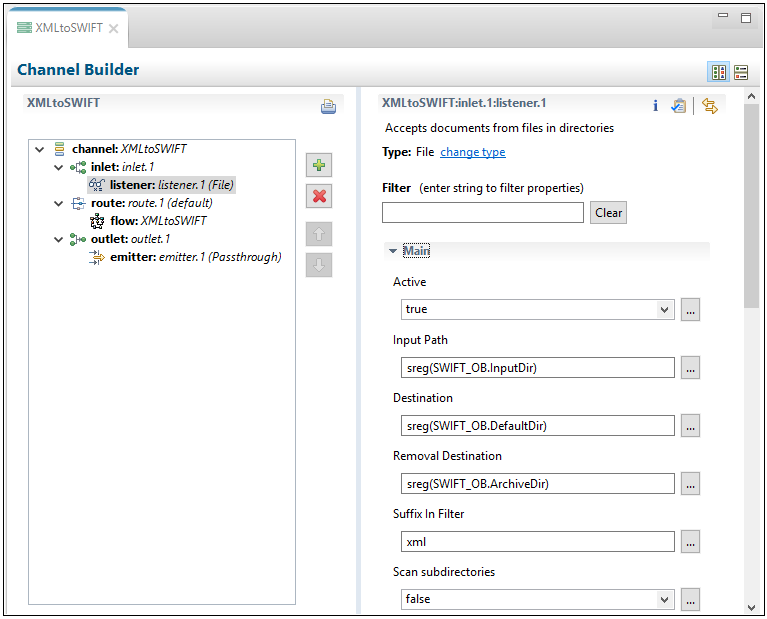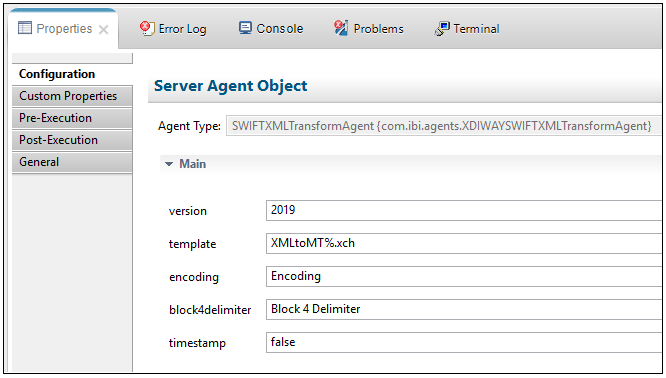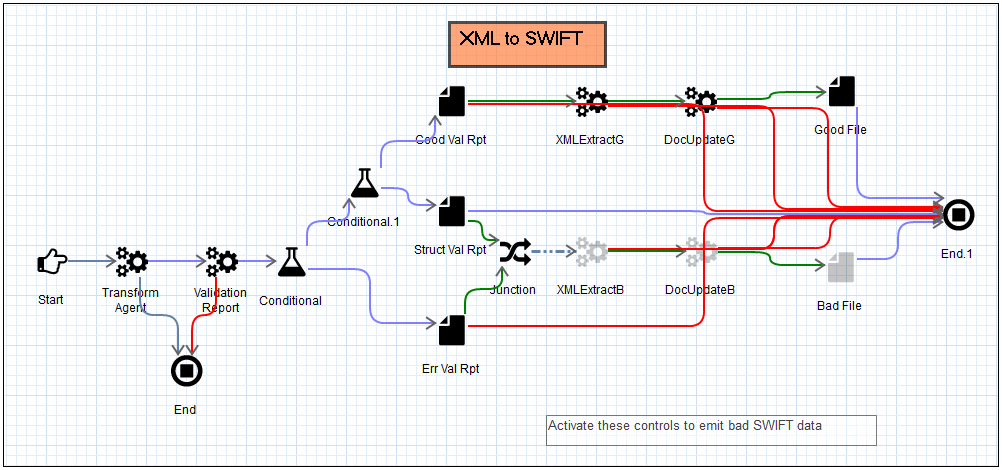Adding an Ebix to the Registry
|
Topics: |
|
How to: |
For more information on adding an Ebix to the registry, see How to Add an Ebix and Registers to Your Channel.
Tip: If you already added an Ebix to the application project for inbound processing, then you do not need to add it again for outbound processing. as described in How to Add an Ebix and Registers to Your Channel.
Sample Listener Configuration
The following image shows a sample listener configuration for the outbound channel.

The following table lists and describes the configuration parameters for the sample listener.
|
Parameter |
Value |
|---|---|
|
Active |
Enables (set to true by default) or disables the listener. |
|
Input Path * |
sreg(SWIFT_OB.InputDir) This value is a special register that uses a defined directory in which input messages are received. Ensure that you have created this directory; otherwise, errors will occur during deployment. |
|
Destination * |
sreg(SWIFT_OB.DefaultDir) This value is a special register that uses a defined directory in which output files are stored after transformation. Ensure that you have created this directory; otherwise, errors will occur during deployment. |
|
Removal Destination |
sreg(SWIFT_OB.ArchiveDir) This value is a special register that uses a defined directory to which input messages are moved if they fail during transformation. Ensure that you have created this directory; otherwise, errors will occur during deployment. It is recommended to configure a removal destination when you are constructing a basic channel. |
|
Suffix In Filter |
xml Input files with the extension .xml are allowed. |
|
Suffix Out |
swift In this example, the extension for output files is .swift. |
Sample Transformation Agent Properties
The following image shows a sample transformation agent.

The following table lists and describes the available configuration parameters for the preparser.
|
Parameter |
Description |
|---|---|
|
version |
Represents the SWIFT release year you are using. |
|
template |
Represents the template to use for the XML to SWIFT transform. Enter the following: XMLtoMT%.xch |
|
encoding |
Determines how to encode the output. |
|
block4delimiter |
Inserts a delimiter into SWIFT Block 4. |
|
timestamp |
Writes a time stamp to the log file. Select true or false. |
Defining a Route
A route defines the path a message takes through a channel.
Channel builder defines the route for you automatically. Add your process flow(s) to the route in Channel Builder.
Defining a Process Flow
Process flows (pflow) are defined and created in the process flow editor.
To create a new process flow, right-click on Flows, select New, then click Flows, and follow the dialog.
The following image shows a sample process flow for the outbound channel.

Defining the Outlet
Outlets define how a message leaves a channel. In the sample inbound configuration, a Passthrough outlet is used. For details on supported protocols, which can be used as outlets, see the iWay Service Manager Protocol Guide.
Adding the Ebix to the Channel
For more information on adding an Ebix to the Channel, see How to Add an Ebix and Registers to Your Channel. If one Ebix is shared by both inbound and outbound channels, it must be added to each channel.
Building the Channel
For more information on building the channel, see How to Build the Channel.
Deploying and Starting the iWay Integration Application
For more information, see:
- Deploying the iWay Integration Application for SWIFT
- Starting iWay Integration Applications in iWay Service Manager
Note that an iWay Integration Application (iIA) may contain multiple channels. The entire iIA is deployed and each channel is started individually.
Procedure: How to Verify the Channel
To ensure that the channel is working as expected, perform the following steps:
- Place an XML file as test data in the file directory that is defined
by sreg(SWIFT_OB.InputDir).
For more information on obtaining sample XML input files (MT535.xml, MT541.xml, and MT950.xml) for testing purposes, see Extracting SWIFT User Samples.
- Check for the SWIFT formatted output file in the file directory that is defined by sreg(SWIFT_OB.DefaultDir). This is the destination directory you specified.
- Confirm that the output has been converted to SWIFT format.